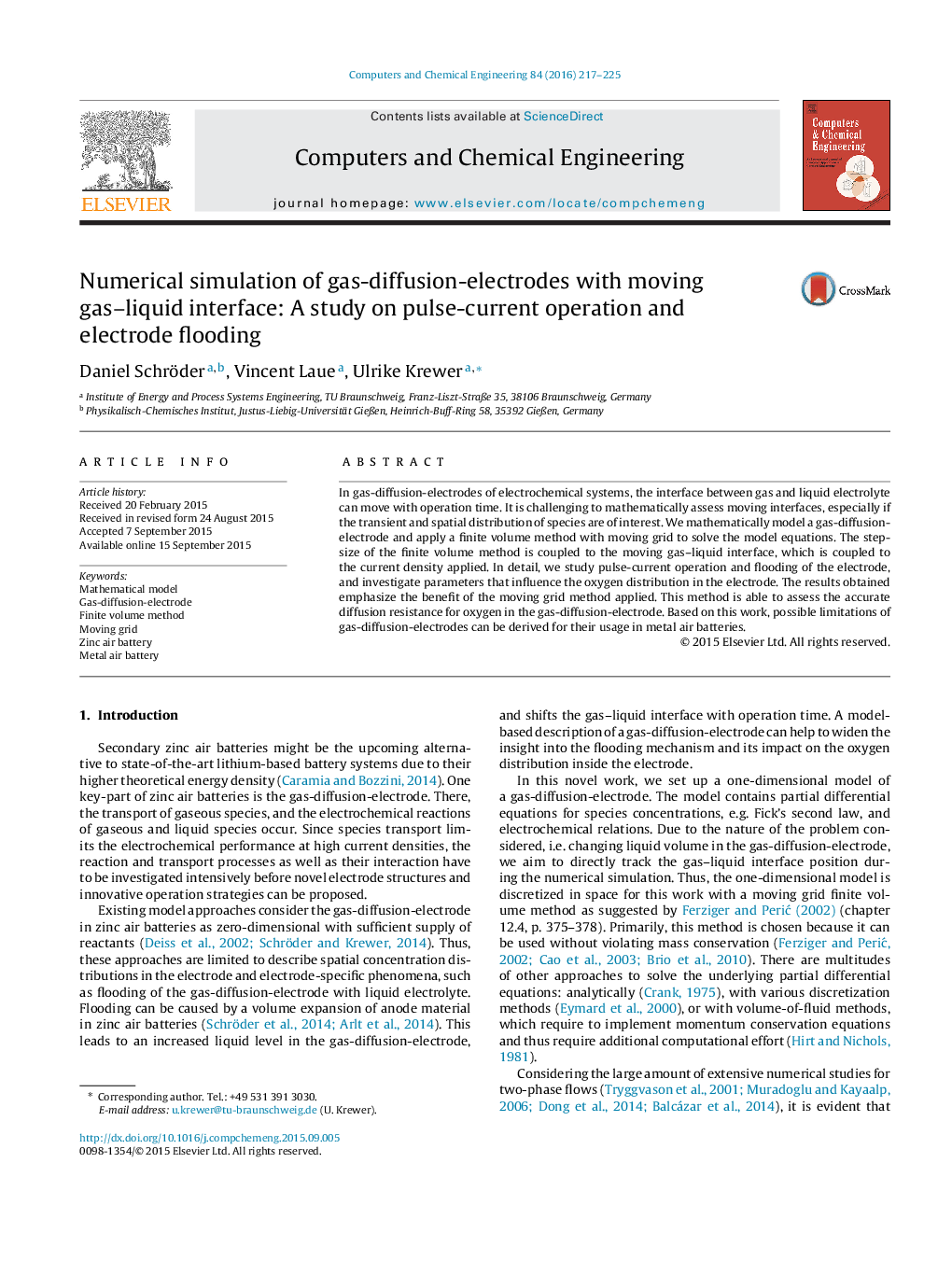| Article ID | Journal | Published Year | Pages | File Type |
|---|---|---|---|---|
| 172083 | Computers & Chemical Engineering | 2016 | 9 Pages |
•A mathematical model of a gas-diffusion-electrode is presented.•A moving grid finite volume method precisely assess the gas–liquid interface.•Species distributions in the electrode are analyzed for pulse-currents and flooding.•Operating/structural electrode properties can be optimized for future work.
In gas-diffusion-electrodes of electrochemical systems, the interface between gas and liquid electrolyte can move with operation time. It is challenging to mathematically assess moving interfaces, especially if the transient and spatial distribution of species are of interest. We mathematically model a gas-diffusion-electrode and apply a finite volume method with moving grid to solve the model equations. The step-size of the finite volume method is coupled to the moving gas–liquid interface, which is coupled to the current density applied. In detail, we study pulse-current operation and flooding of the electrode, and investigate parameters that influence the oxygen distribution in the electrode. The results obtained emphasize the benefit of the moving grid method applied. This method is able to assess the accurate diffusion resistance for oxygen in the gas-diffusion-electrode. Based on this work, possible limitations of gas-diffusion-electrodes can be derived for their usage in metal air batteries.
